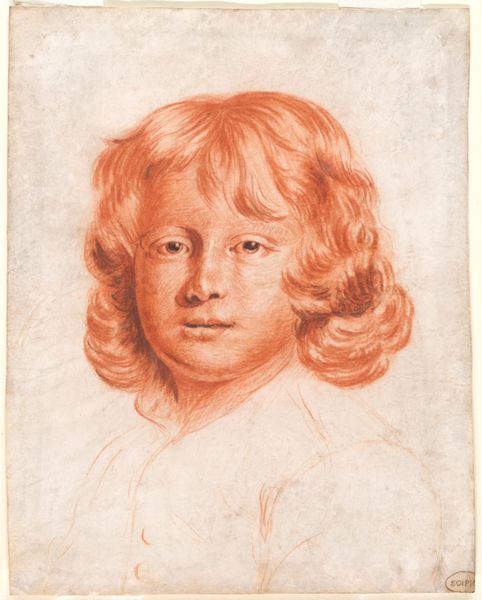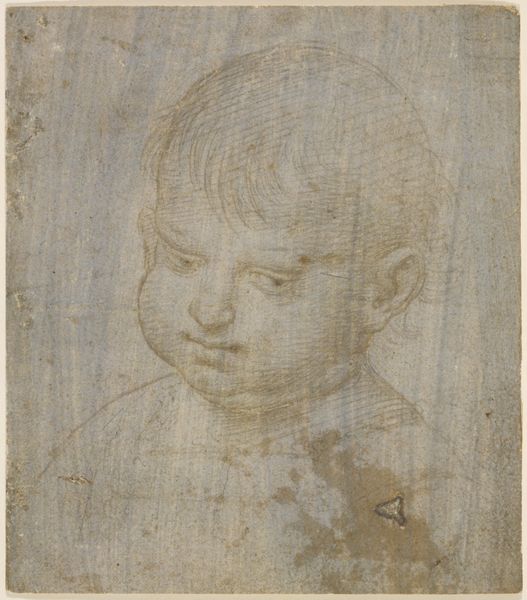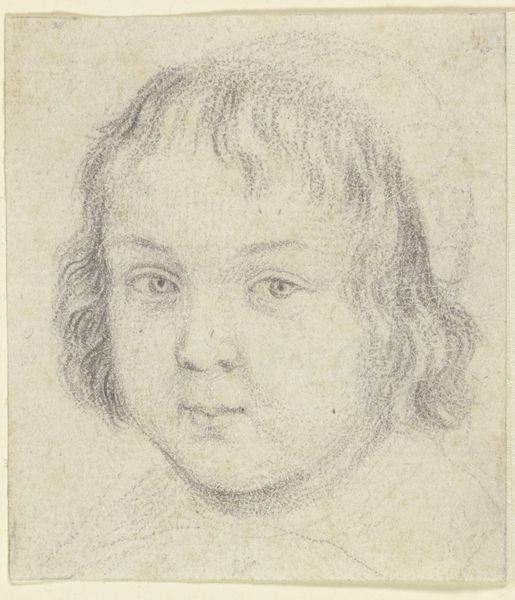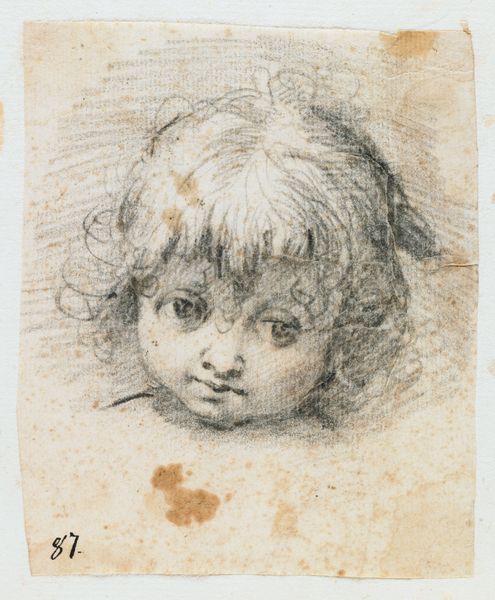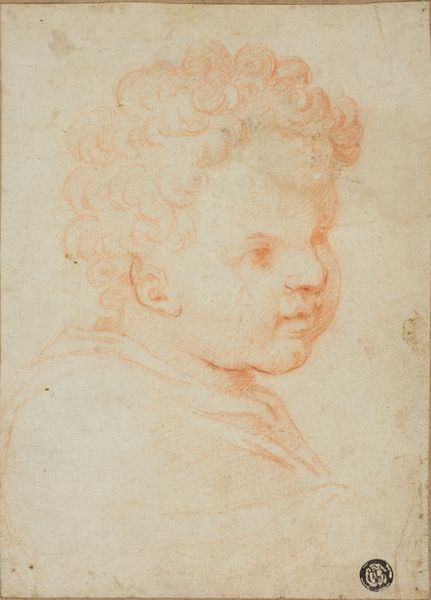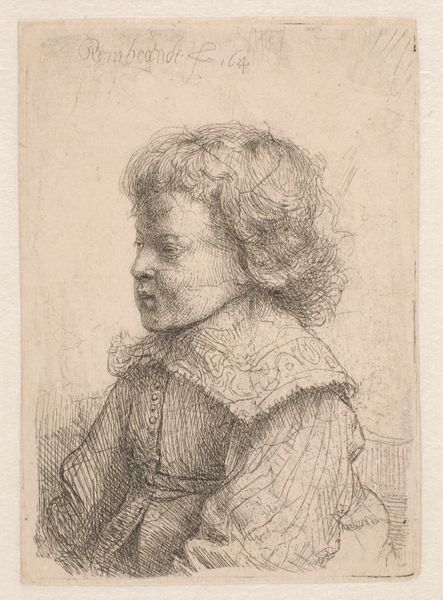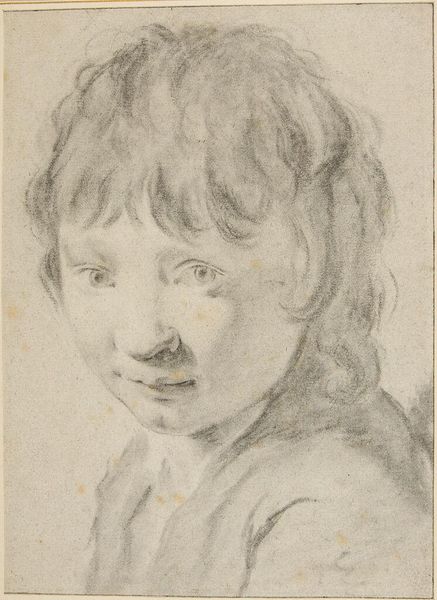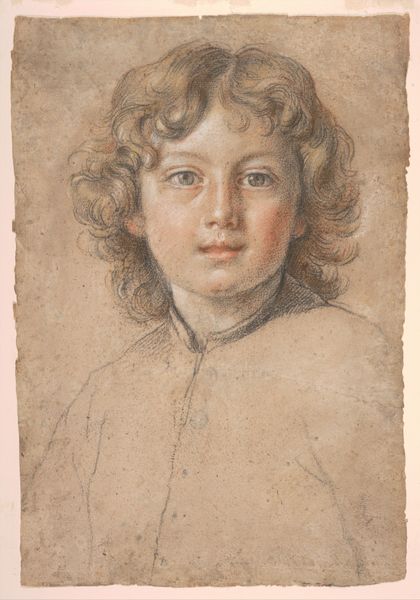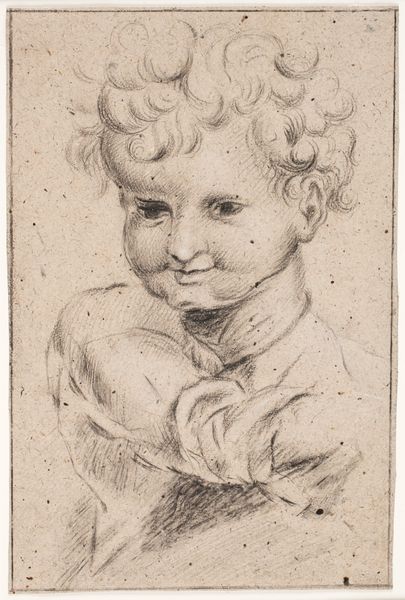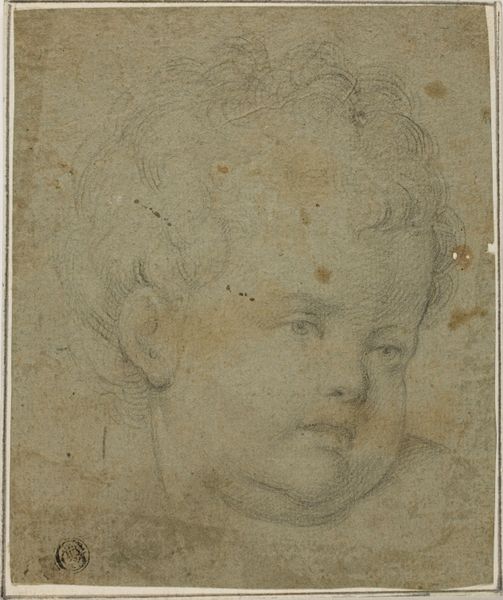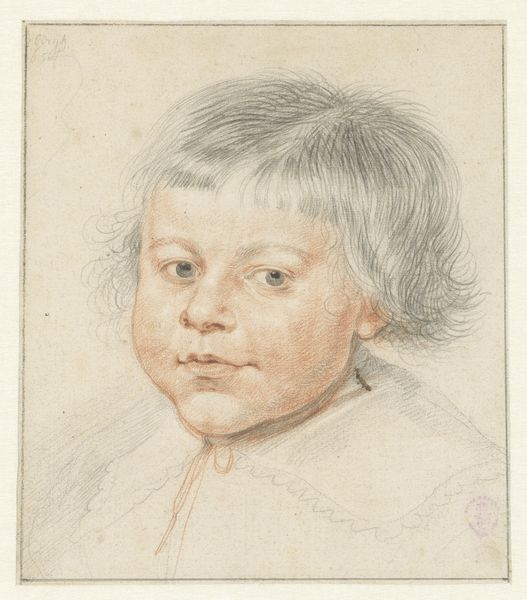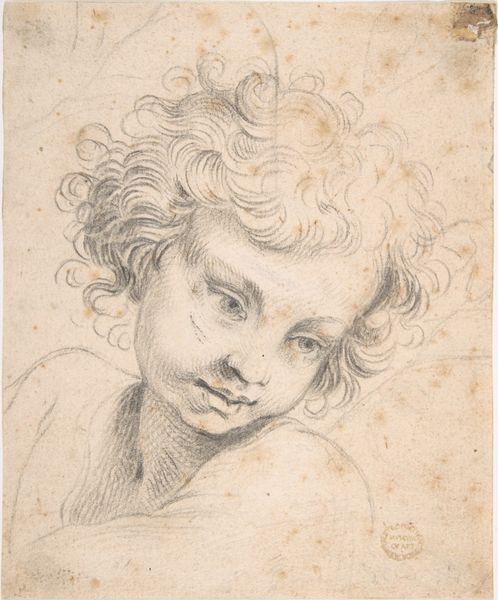
drawing, paper, pencil
#
portrait
#
drawing
#
figuration
#
paper
#
pencil drawing
#
pencil
#
northern-renaissance
Dimensions: 10-15/16 x 7-3/4 in. (27.8 x 19.7 cm)
Copyright: Public Domain
Curator: Immediately, I notice the tenderness captured in those wide, innocent eyes. There's something universally appealing about this portrayal of childhood. Editor: Indeed. What you're observing is manifested through "Child's Head", an exquisite pencil drawing on paper, estimated to originate between 1600 and 1700. The anonymous artist demonstrates immense skill in rendering the soft textures of the child’s skin and hair. Curator: Absolutely, and understanding the era, one must consider childhood within the context of portraiture and its intersection with notions of innocence and familial power. Whose child was this? How were children represented within society, and how did these portrayals reinforce particular societal norms around gender or class? Editor: If we bracket questions of identity, notice how the artist creates volume through the masterful application of shading. See how the light catches the roundness of the cheek and the subtle curves of the lips? The delicate use of line emphasizes the fragile and transient nature of youth. The paper itself also lends a warmth to the subject—perhaps a commentary on the bloom of childhood? Curator: Warmth yes, but for whom? Were the bloom and perceived innocence presented as a shield for a young boy, maybe a justification for exploitative labor, for example? Was there a protective layer created for this child through representation? Editor: I understand your reading of these visual codes. Yet it is through a meticulous focus on form, on how the lines coalesce to define this form that enables the interpretation. The symmetry, the gentle asymmetry, and the implied volume, all create this sensation of childlike roundness. Curator: Precisely. It is these constructed visions of children that carry heavy meaning. We see childhood itself as a social construct. It is crucial to address this. Editor: You've added invaluable layers to how we may now perceive "Child's Head," through critical awareness of its complex historical setting. Curator: I appreciate that you've directed our attention back to the image, focusing closely on its skillful artistry. Thank you for this exchange.
Comments
No comments
Be the first to comment and join the conversation on the ultimate creative platform.
